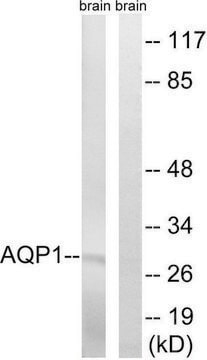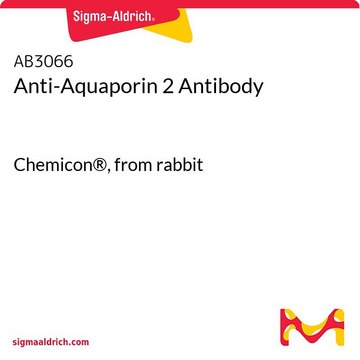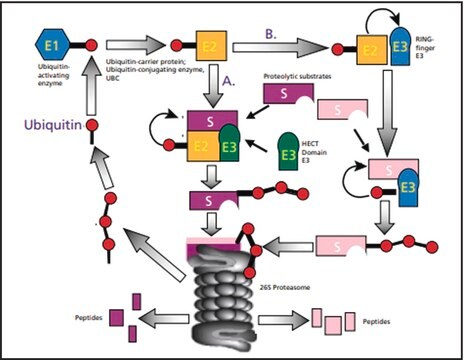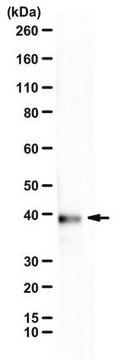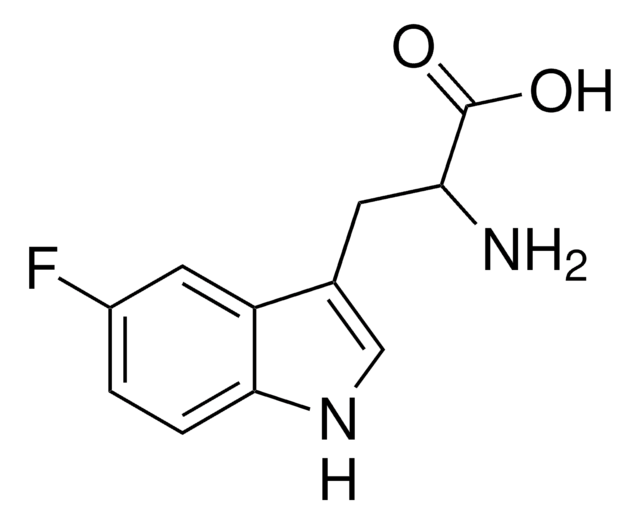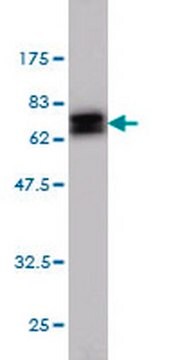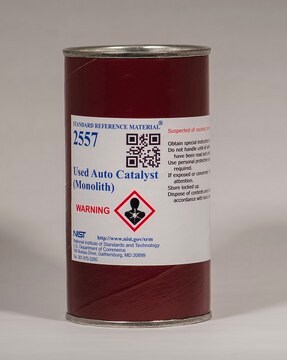ABS2130M
Anti-phospho RasGRP2 (Ser116/Ser117)
from rabbit
Sinónimos:
RAS guanyl-releasing protein 2, Calcium and DAG-regulated guanine nucleotide exchange factor I, CalDAG-GEFI, F25B3.3 kinase-like protein
About This Item
Productos recomendados
origen biológico
rabbit
Nivel de calidad
forma del anticuerpo
affinity isolated antibody
tipo de anticuerpo
primary antibodies
clon
polyclonal
reactividad de especies
mouse, monkey
reactividad de especies (predicha por homología)
rat (based on 100% sequence homology)
envase
antibody small pack of 25 μg
técnicas
immunofluorescence: suitable
western blot: suitable
isotipo
IgG
Nº de acceso NCBI
Nº de acceso UniProt
modificación del objetivo postraduccional
phosphorylation (pSer116/pSer117)
Información sobre el gen
mouse ... Rasgrp2(19395)
Descripción general
Especificidad
Inmunógeno
Aplicación
Western Blotting Analysis: A representative lot detected phospho RasGRP2 (Ser116/Ser117) in RasGRP2 purified from GST-Rasgrp2 transfected COS-7 cells and phosphorylated by GST-PKAc alpha, Forskolin stimulated mouse striatal muscle slices (Courtesy of Dr. Kozo Kaibuchi at Nagoya University, Japan).
Western Blotting Analysis: A representative lot detected phospho RasGRP2 (Ser116/Ser117) in a kinase assay with GST-Rasgrp2 (amino acids 1-374) and PKA, Forskolin and SKF81279 stimulated mouse striatal muscle slices, COS-7 cells transfected with EGFP-Rasgrp2 and Myc-PKA, nucleus accumbens (NAc) from mice treated with cocaine, Nucleus accu (Nagai, T., et. al. (2016). Neuron. 89(3):550-65).
Signaling
Calidad
Western Blotting Analysis: A 1:1,000 dilution of this antibody detected RAS guanyl-releasing protein 2 in RasGRP2 purified from GST-RasGRP2 transfected COS-7 cells and phosphorylated on Ser116/Ser117 by GST-PKAc alpha
Descripción de destino
Forma física
Almacenamiento y estabilidad
Otras notas
Cláusula de descargo de responsabilidad
¿No encuentra el producto adecuado?
Pruebe nuestro Herramienta de selección de productos.
Certificados de análisis (COA)
Busque Certificados de análisis (COA) introduciendo el número de lote del producto. Los números de lote se encuentran en la etiqueta del producto después de las palabras «Lot» o «Batch»
¿Ya tiene este producto?
Encuentre la documentación para los productos que ha comprado recientemente en la Biblioteca de documentos.
Nuestro equipo de científicos tiene experiencia en todas las áreas de investigación: Ciencias de la vida, Ciencia de los materiales, Síntesis química, Cromatografía, Analítica y muchas otras.
Póngase en contacto con el Servicio técnico